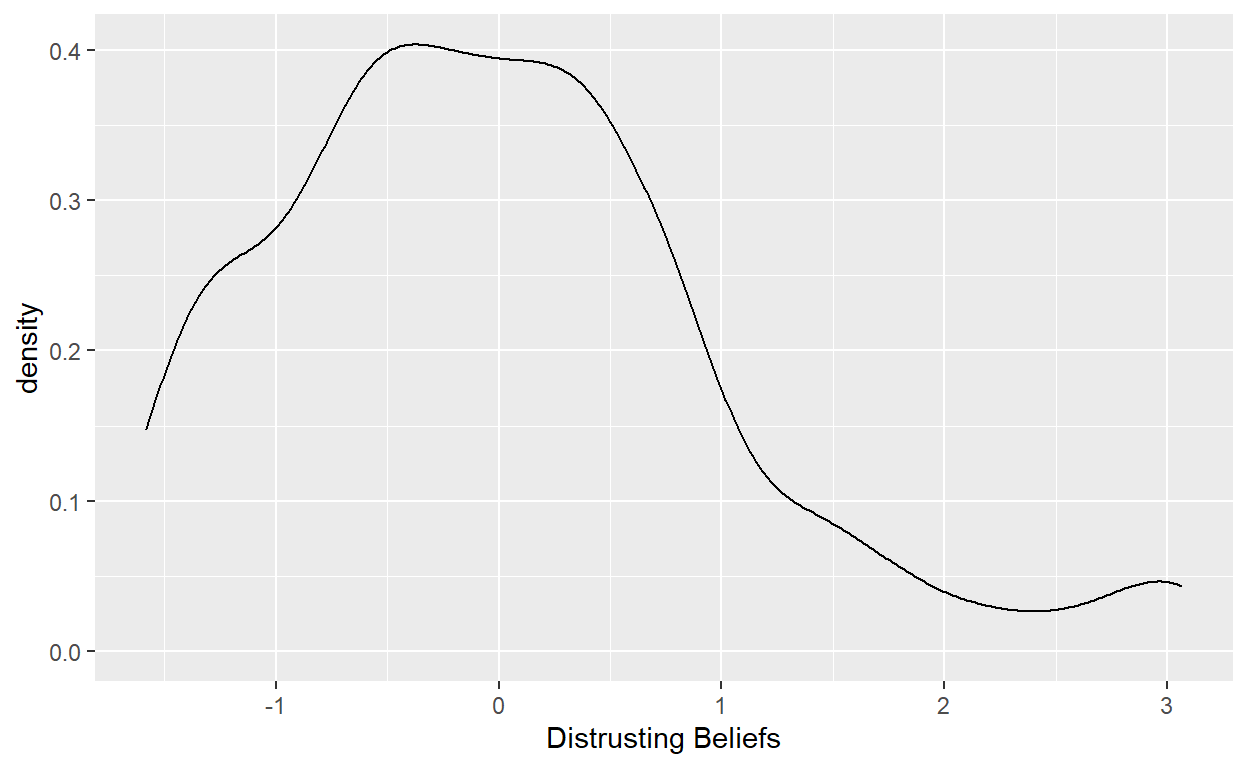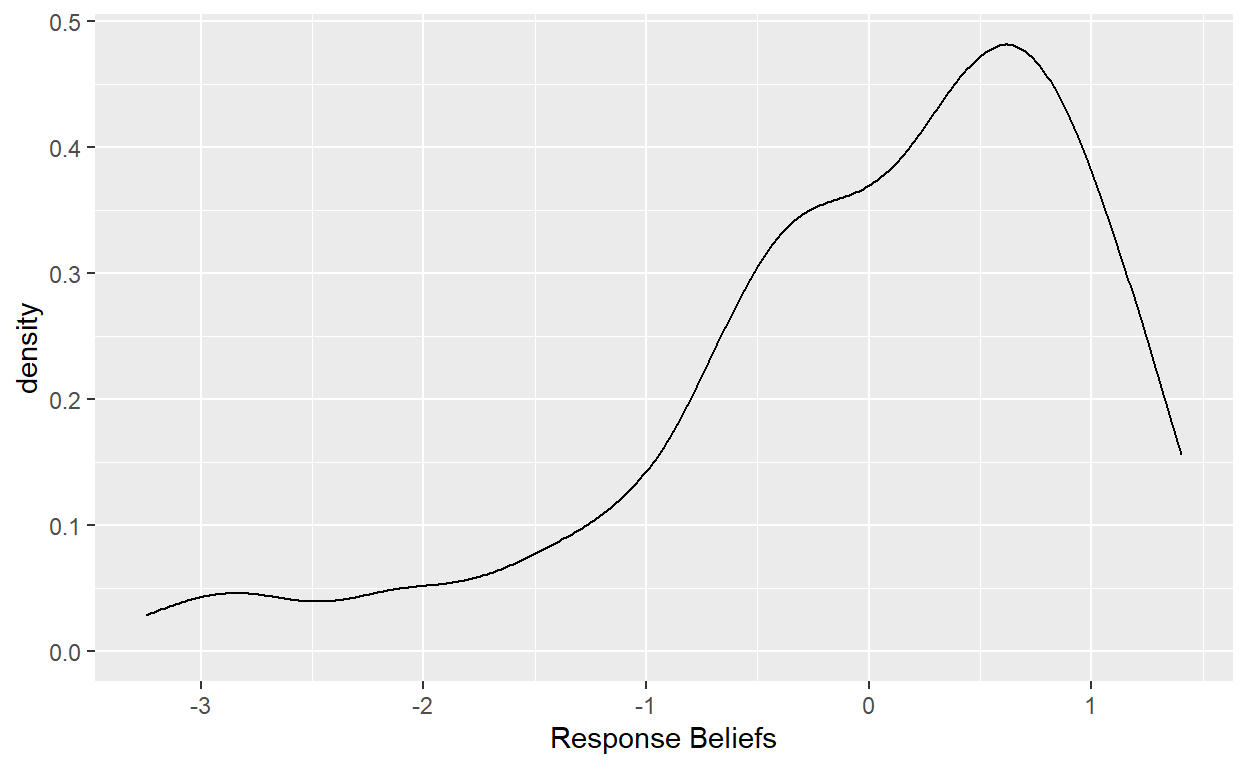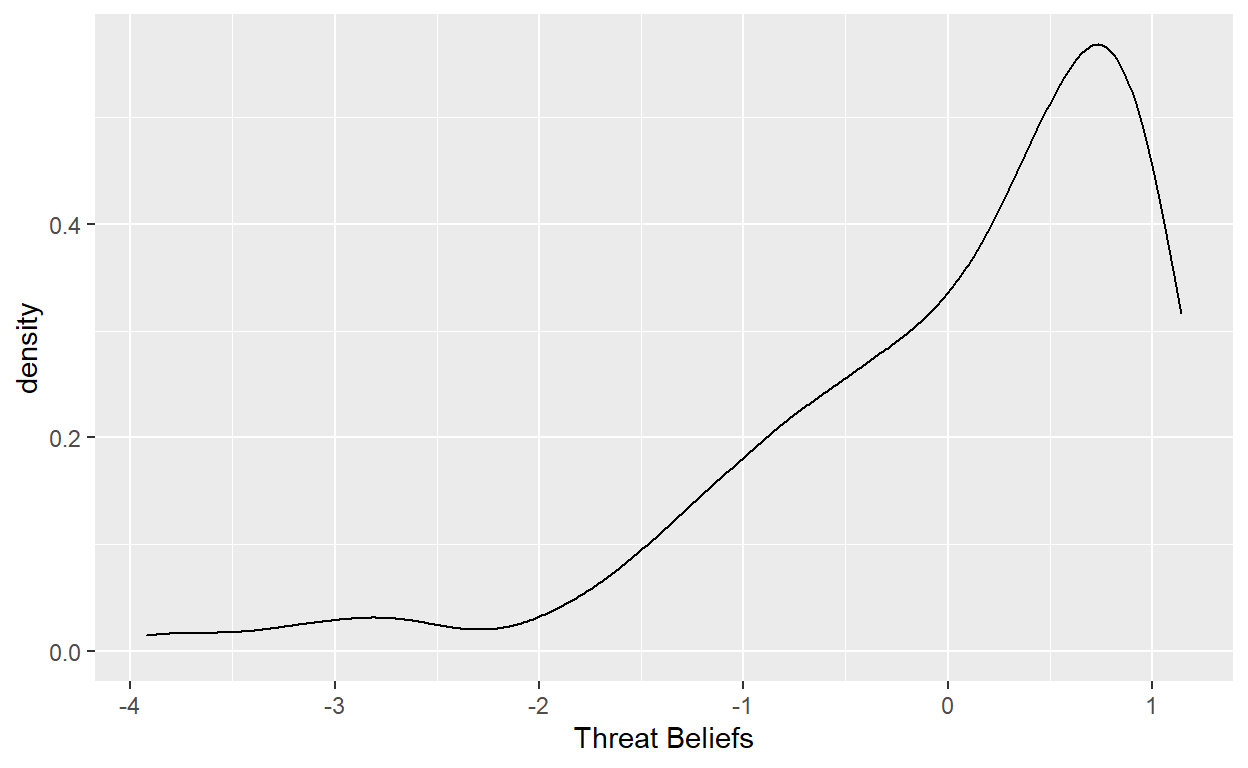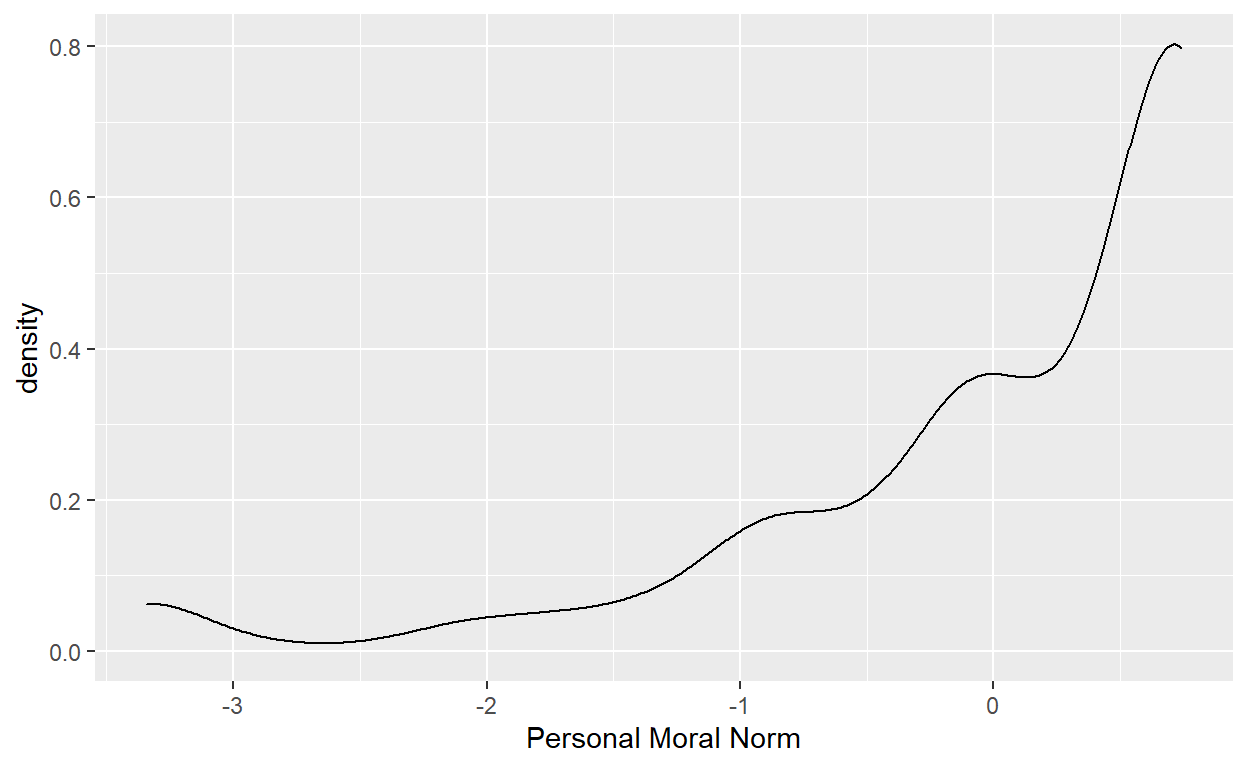The code for the assessment of endogeneity using the Gaussian Copula approach comes from
Hult, G. T. M., J. F. Hair, D. Proksch, M. Sarstedt, A. Pinkwart, & C. M. Ringle (2018). Addressing Endogeneity in International Marketing Applications of Partial Least Squares Structural Equation Modeling. Journal of International Marketing, 26(3), 1–21. https://doi.org/10.1509/jim.17.0151
Test of non-normality
The Gaussian Copula approach can only be used if the independent variable in question is non-normally distributed. So we first test the distribution of the construct scores.






All independent (or endogenous) variables are non-normally distributed. Therefore, the Gaussian Copula approach can be used for all of them.
Regression of Response Beliefs on Distrusting Beliefs and Knowledge
Neither the Distrusting Beliefs nor the Knowledge copula is significant, indicating that there is no endogeneity in the regression of Response Beliefs on its predictors.
Regression of Threat Beliefs on Distrusting Beliefs and Knowledge
Neither the Distrusting Beliefs nor the Knowledge Copula is significant, indicating that there is no endogeneity in the regression of Threat Beliefs on its predictors.
Regression of Behavioral Intention on its predictors
In looking only at single copulas, none of copulas achieves a significant p-value. However, when combining multiple copulas, the copula for Response Beliefs achieves a significant p-value in some cases (p < 0.1). Further, adding the single copula increases the path coefficient by about 0.06 . Both of this indicates that Response Beliefs might be endogenous. There is nothing pointing to endogeneity in any of the other predictors.
As the copula cannot be integrated in iterative model improvement, the copula test will be repeated for the final models.